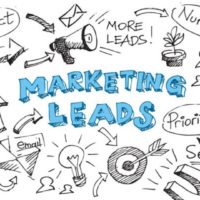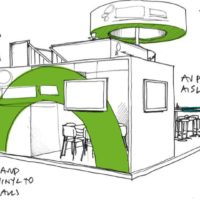
Written by Roderick Jefferson – CEO at Roderick Jefferson & Associates, LLC.
I’m honored to add my thoughts and best practices as the final contributor in the 5 Ways to Accelerate Your Ramp to Revenue blog series. If you haven’t had a chance to read the first (4) blogs, I’d HIGHLY recommend checking them out!
- How good is your sales onboarding – do you have the wrong focus? (Tim Ohai)
- Does Your Onboarding Program Benefit from Blended Learning? (Ed Ross)
- Sales onboarding mistake #2: Ignoring How People Actually Learn (Tim Ohai)
- Are You Loving and Leaving Your Sales New Hires? (Tamera Schmidt)
As with every journey, it begins with a single step! Most companies (especially those in
hyper growth mode) tend to only focus on the initial phase of the journey… Onboarding! While onboarding is critical to the success of sales professionals because it sets the foundation of successful selling within the company, it’s merely a step in the process!
According to Aberdeen reported that companies with successful sales enablement programs are:
- 2.2 times more effective at linking sales actions to revenue
- 83% more effective at improving productivity using technology,
- 58% more effective at finding, training, and retaining talent.
These companies also deliver —
- 32% higher team sales quota attainment
- 24% better individual quota achievement
- 23% higher lead conversion rate
The decision to adopt sales enablement to support sellers, keep customers happy, and drive incremental revenue carries the additional responsibility of implementing the field’s best practices. I’d like to leave you with the following sales enablement best practices to ensure that you’re helping to drive productivity through communication, collaboration, & orchestration:
- Set clear objectives for your sales enablement program. The goals should not be just to support the salesforce in general but to drive specific, transformative, and measurable changes in the organization and its performance. It could be to update the technology stack, quicken the sales cycle, improve margins, or other strategic goals.
- Make sales enablement accessible to all stakeholders. A program won’t deliver its promise if there are hurdles to its actual implementation by sellers. Ensure that all salespeople know about and are skilled in utilizing your sales enablement assets. Playbooks and engagement material should be uniform and updated across the organization. Use effective communication and training to optimize the benefits of sales enablement.
- Sales enablement empowers sellers by being buyer-centric. Customer centricity has become a success factor in the digital economy where power has already shifted to consumers. Align the program with the customer journey and tailor each engagement to deliver the best buyer experiences.
- Adopt sales enablement as a corporate mindset. Encourage a culture where every non-sales employee believes they are part of the sales support team. Meanwhile, establish sales training as an ongoing process for members of the salesforce.
- Make sales enablement transparent, integrated, and measurable. The sales organization should be able to make accurate and quantifiable assessments about the impact of each sales enablement effort. Sales enablement assets should also be synced with the rest of the company’s technology stack.
- Reject complacency. Sales enablement is a continually evolving field and stakeholders should remain open to technological breakthroughs and new methodologies that can improve current capabilities. As the mindset, behaviors and needs of your prospects and customers are shifting, you must be prepared to change the way that you support them. In other words, “learn their language, don’t expect them to learn yours”
Remember, while the 1st step in the Sales Enablement journey is important… It’s only 1 of many steps required to complete the journey!
Check out the replay of the 5 Ways to Accelerate Your Ramp to Revenue webinar.




